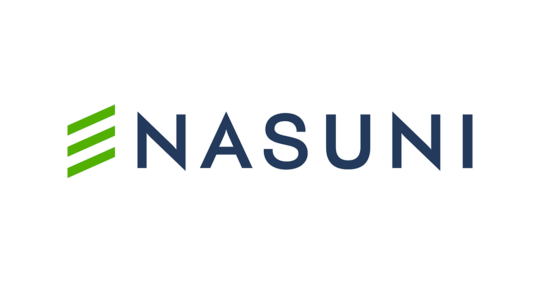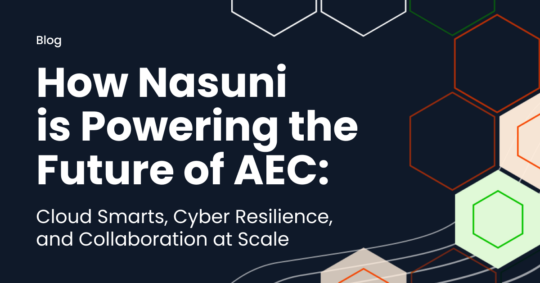Trends from the Field: SharePoint, M&A, AI, Collaboration Emerge as Key Concerns
Nasuni’s Patrick Watson discusses the technology trends and learnings from his recent tour of the Asia-Pacific region.
June 10, 2025 | Patrick Watson

Every enterprise is global. After spending two weeks traveling through the Asia-Pacific region last month, my colleague Matt Tewkesbury and I were surprised at how many large organizations are dealing with the exact same problems. They have to operate as global enterprises to compete, especially in the Architecture, Engineering, and Construction (AEC) space where there is a huge amount of collaboration and joint ventures. And to be successful, they need to have the infrastructure and tools in place to support that global reach.
During our tour, we met with many different personalities at varying levels of seniority (including the c-suite) across storage, compute, and infrastructure teams. Most operated in the AEC, Manufacturing, and Media & Advertising industries. Some were existing Nasuni customers, others interested prospects (who are now happy Nasuni customers). We dropped in on a few of our cloud partners, too.
On the whole these were large organizations. One customer serves 35,000 users distributed across seven regions worldwide. Another has 75,000 users spread through just about every geography. Based on our meetings, four broad themes emerged:
1. SharePoint overage is a massive business challenge, particularly in AEC
2. Security and ransomware defense (and incident response) may be more important than ever
3. Offshoring workloads through global collaboration is now essential
4. Everyone is building AI tools and needs their data to be AI-ready
Let’s run through each of these briefly.
1. The SharePoint Overage Challenge
During the pandemic, more and more end users started relying on SharePoint for storage and collaboration. Which is perfectly fine. It’s great technology. The problem is that it doesn’t scale. As your end users start filling up their SharePoint folders with Revit models and other large files, your organization blows past your allotted limits and you start incurring massive, unexpected fees. This is especially common in industries like AEC and Media & Advertising, but we’re seeing this across companies of all types.
2. M&A Activity vs. Ransomware
Ransomware is a risk for any organization, but our meetings drove home the particularly high stakes for AEC and manufacturing firms. When a factory is taken offline, production halts. In AEC, an attack can lead to massive penalties. One of our customers, a global construction firm, explained that if they need to halt progress on a major build and push back the project completion date, the penalties can be $1M per day.
The ransomware threat becomes especially challenging during mergers and acquisitions. Large AEC firms generally grow and shrink through M&A. Media and marketing firms are similar, and onboarding or divesting studios, offices, or companies can be extremely difficult work. A newly acquired company might have a completely different network topology. You might not share the same security protocols. Or they might have a data center full of NetApps that you need to figure out how to manage.
What we kept hearing is that this is not only an architecture challenge, but a uniquely complex security concern. Even if your organization has a strong ransomware solution in place, the new firm might not. One organization was hit by ransomware while they were in the middle of onboarding a new company. Resolving the issue was an absolute mess.
3. Collaboration as a Competitive Advantage
As firms grow and expand, their talent becomes more distributed. That talent is priced differently, too. One of the companies we sat down with talked about how they might have expensive, highly accomplished engineers in a Canadian office and a collection of less experienced engineers elsewhere. To compete for large projects, they want to be able assign the right people to the right tasks. You don’t want to assign the high-end Canadian engineers mundane work. That will drive up the cost of the project – and your bid – and drive them crazy.
But if you have the tools in place to efficiently spread workloads around the globe, then you’ll be able to optimize cost and quality. Your best and most expensive engineers will only be doing the most important work. This becomes a massive advantage in a highly competitive space.
4. Executives are Demanding AI-Readiness
Every single one of the people we met with is experimenting with AI tools. Some were building copilots to help their sales teams interrogate data. Others are focused on access, security, and guardrails. One of the most common themes we heard across all the customers we met with was the need to leverage AI for their teams to understand commonalities with RFPs: “Show me where we have completed a successful infrastructure project within a certain geography.”
Essentially, they’re all getting these AI directives from executive leadership demanding progress.
We’re also starting to hear more of one of the strategic points we’ve been pushing here at Nasuni: Any enterprise that hopes to extract real value from AI needs to get its data in order. That means all of your data, including unstructured file data, needs to be in a single namespace which can be curated. Then, we can start feeding AI tools.
How Nasuni Addresses These Challenges
The technology trends that emerged during our tour didn’t surprise us, exactly. What they did was reinforce what we’ve been hearing from companies all over the world about the challenges facing today’s large global organizations.
The reassuring takeaway – for our customers and, to be honest, for us – is that Nasuni is uniquely positioned to address these problems. We don’t compete with SharePoint. We work together by helping customers optimize their SharePoint deployments to limit costly overages. Our enterprise-tested security and ransomware recovery tools are built into the platform, and we’ve proven that we can facilitate secure M&A processes. As a collaboration tool, Nasuni has been vetted inside some of the most demanding organizations in the world, and we’re helping those companies optimize unstructured data management for AI.
Finally, we keep it all simple. Our technology is architected to solve each of these problems – and many others – through a single, easy-to-use, and cost-effective solution. Reach out to a Nasuni representative if you’re open to sharing your enterprise storage and data management challenges. Let’s see if we can help.
Related resources

Industries
Whether you need to scale up secure file sharing, manage data more efficiently, or protect assets, we apply data ingenuity to a wide range of industry…
Learn more
April 22, 2025 | Nasuni
How Nasuni is Powering the Future of AEC: Cloud Smarts, Cyber Resilience, and Collaboration at Scale
Nasuni discusses its latest momentum enhancing cloud storage for AEC companies across the globe.
Read more